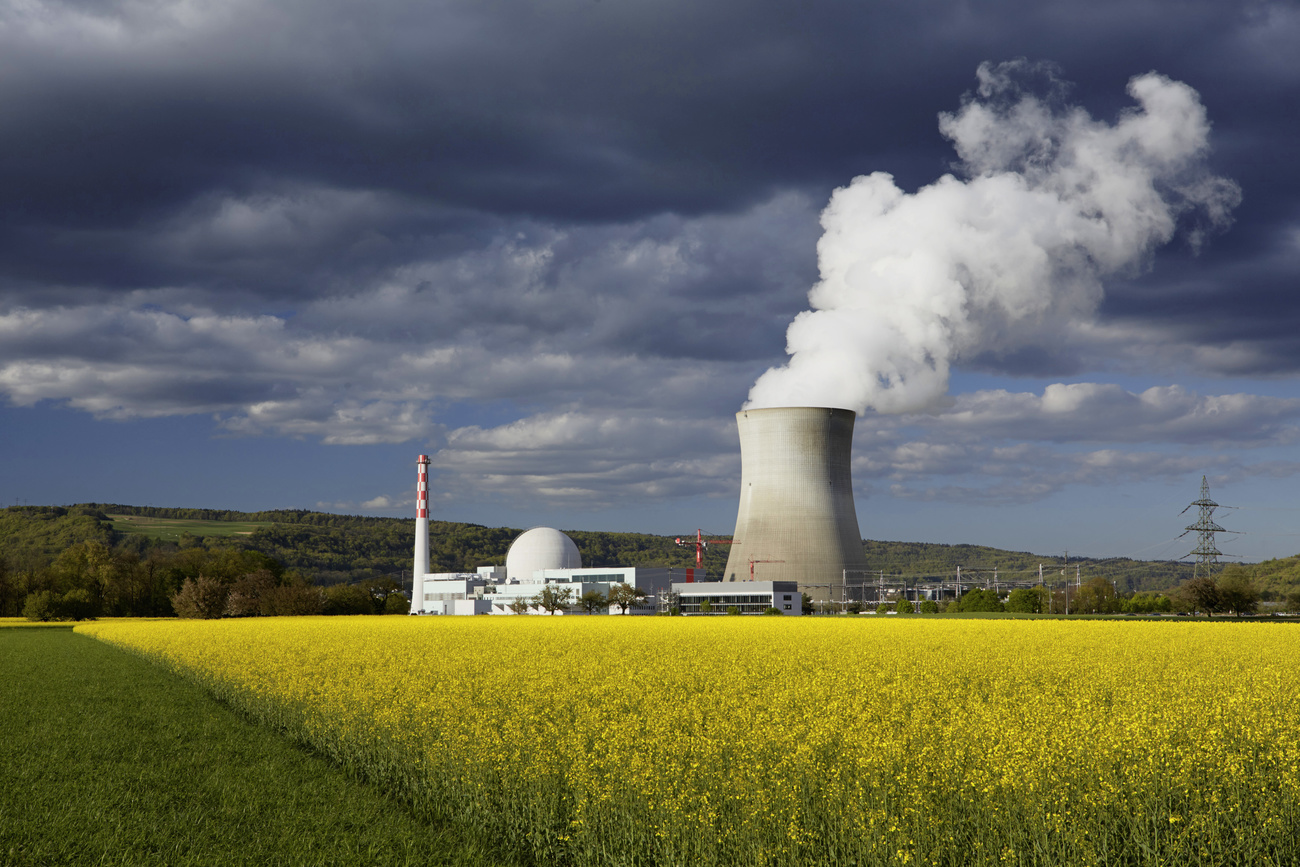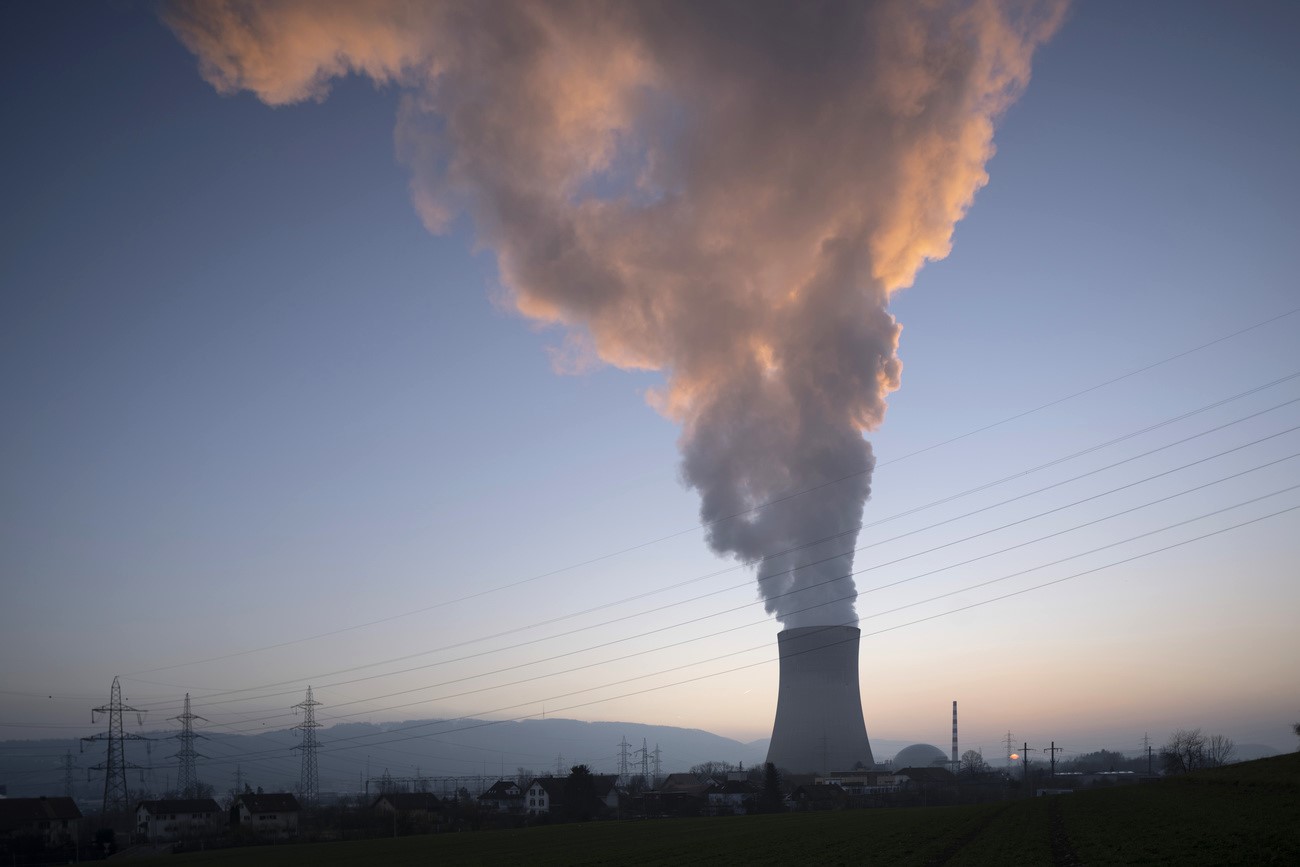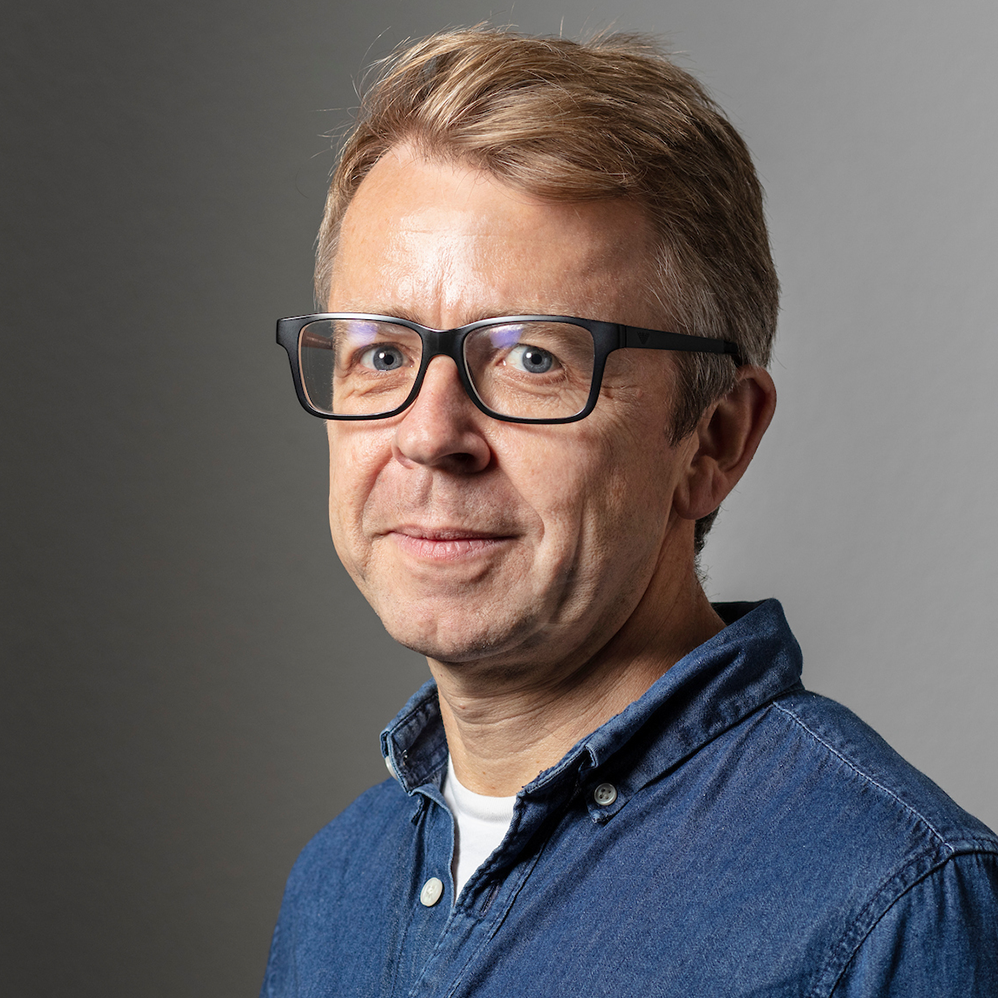
Risks remain as Switzerland weighs return to nuclear power

The Swiss government has followed the lead of many other countries in seeking to end its decade-old ban on nuclear power in the name of clean energy solutions. But researchers say the power source brings with it a set of specific, misunderstood hazards.
The debate over the future of nuclear energy has returned to Switzerland. In response to the popular initiative “Electricity for All at All Times (Stop Blackouts)”External link, the Federal Council decided late last year to amend the Nuclear Energy Act, aiming to lift the existing ban on constructing new nuclear power plants.
The ban, which came into force following the 2011 Fukushima nuclear power plant disaster in Japan, had removed nuclear power from Switzerland’s energy strategy. Now the government has done an about-face, declaringExternal link nuclear power to be a necessary part of a balanced electricity supply. Its aim is to ensure energy security amid rising demand while helping Switzerland meet its climate goals.

More
Why climate change and wars are reviving interest in nuclear energy
Nuclear power is experiencing a global comeback, according to the International Energy Agency (IEA)External link. More than 40 countries are pursuing concrete nuclear power expansion plans, with the goal of tripling global nuclear capacity by 2050 – also to meet emissions targets. The IEA writes that “Nuclear energy is a leading source of clean and secure electricity generation – second only to hydropower among low-emissions sources.”
Low in emissions but far from clean
If we look only at carbon dioxide emissions, nuclear power is certainly less polluting than electricity from coal or natural gas, says Doug Brugge, a biologist and public health professor at the University of Connecticut.
“But to call nuclear power a clean energy source is simply wrong,” he emphasises. Together with engineer Aaron Datesman, Brugge recently published the book Dirty Secrets of Nuclear Power in an Era of Climate ChangeExternal link, aiming to present the key risks of nuclear energy in a factual, objective and accessible way. Although his research mainly focuses on the health effects of air pollution, he has been interested in the health consequences of uranium mining for over three decades – the key energy source for nuclear power.
His motivation is personal: Brugge grew up on a Navajo native American reservation in the southwestern United States, where uranium was mined from the 1940s through the 1980s. Many mine workers later died from lung cancer or lung fibrosis, andnone had been informed about the dangers of radiation exposure. To this day, much of the radioactive material brought to the surface during the mining process remains exposed, contaminating land and water. The uranium enrichment process remains dirty and dangerous for workers, polluting soils and waterways in mining regions with radioactivity, says Brugge.
“But few talk about it, because the issue mostly affects poor, often Indigenous communities in remote areas. It’s a working-class dirty problem. Anyone calling nuclear power clean is ignoring this part of the story.”

Exposure along the nuclear chain
French nuclear engineer Bruno Chareyron is also critical of nuclear power’s “clean” label. Since 1993, he has worked for CRIIRAD, an independent radiation protection organisation founded after the Chernobyl disaster. Over the decades, Chareyron has carried out countless independent radiation measurements in uranium mining areas, on trains and lorries transporting radioactive materials to and from nuclear power plants, and in rivers used to cool reactors. The group has measured radiation levels on car parks, public roads, hiking trails and school playgrounds in France, where radioactive residues from uranium mining have been used as building materials. He has repeatedly found significant levels of radiation – sometimes exceeding legal limits – that were not publicly declared. In his new book Le nucléaire : une énergie vraiment sans danger ?External link he outlines the risks and warns against illusions of technological progress linked to nuclear power.
“The official narrative and reality are often worlds apart,” says Chareyron. While studying nuclear and energy engineering, he was taught a highly positive view of the technology. But his fieldwork with CRIIRAD revealed a different picture. The entire nuclear chain – from mining to enrichment to reactor use – exposes workers and local populations to long-term radioactive risks. The issue of how to safely store high-level radioactive waste for thousands of years remains unresolved and people underestimate the risk of a major reactor accident, he says.

More
Technology for slashing nuclear power plant waste wins Swiss backing
Planning for a changing climate
Chareyron sees the climate crisis as an argument against nuclear power, not in favour of it.
“Today’s nuclear power plants are not designed to withstand the extreme events climate change will bring,” he warns. To avoid meltdowns like in Fukushima, reactors need a constant supply of power and water for cooling, and spent nuclear fuel requires cooling for years.
Rising water temperatures, falling river levels, floods, wildfires and storms could jeopardise reactor safety in the future. “The risk of reactor accidents will increase with climate change,” Chareyron concludes.
Andrea Rezzonico, a security expert at the US-based Council on Strategic Risks, has been studying the intersection of climate change, nuclear developments and global security for the past seven years.
“Even back then, many states viewed nuclear power as a way to meet the climate targets of the Paris Agreement. We wanted to understand how climate change might affect nuclear infrastructure,” she says.
Rezzonico believes that nuclear power can contribute to climate protection in the long term but that faster short-term solutions are needed. She also warns that both existing and new reactors must take climate scenarios and extreme events into account to prevent nuclear accidents.
“Many reactors were built at a time when today’s climate forecasts were not yet a factor,” she explains. Her analyses show that coastal reactors may be at risk from rising sea levels and storm surges. In Switzerland and Europe, droughts, falling river levels and warmer water temperatures pose the greatest challenges, she says: “Cooling water availability will become a critical factor. In the future, we may face the question: do we use the water to cool reactors – or for agriculture? At the same time, that water will be much warmer, which will be an issue both for the initial cooling needs and once it’s discharged back into the ecosystem.”
The human factor is key – even in phase-out
In the debate on the future of nuclear energy in Switzerland, the focus should not lie solely on CO2 emissions and technology, says Rhona Flin. “The human factor is also crucial for the safe operation of a nuclear power plant.”
Flin is emeritus professor of applied psychology at the University of Aberdeen in Scotland and has spent decades researching the interplay of safety culture, leadership and human behaviour in high-risk industries such as nuclear energy, aviation and the oil industry. She also helped develop an EU training programme on nuclear safety culture for industry leaders and regulators. Flin believes that even in countries phasing out nuclear energy, the issue of skilled personnel must not be neglected. Safely operating existing reactors, dismantling them, and managing radioactive waste will continue to require highly-trained professionals for decades to come. New technologies like artificial intelligence or robotics offer both new opportunities and risks. “We still need to learn how people and machines can work together effectively – and what happens when machines fail.”
What matters is not only technical expertise but also so-called non-technical skills, such as communication, teamwork, and decision-making under pressure, as well as a work culture in which staff feel safe to talk about possible risks openly.
“Employees must feel comfortable speaking up about problems and concerns, even to their superiors. And leading managers must be willing to listen and act accordingly.” Such a safety culture will be critical for the secure operation of nuclear plants, Flin says – regardless of whether Switzerland builds new reactors or sticks with its nuclear phase-out.
More
Edited by Veronica DeVore

In compliance with the JTI standards
More: SWI swissinfo.ch certified by the Journalism Trust Initiative
















![The four-metre-long painting "Sonntag der Bergbauern" [Sunday of the Mountain Farmers, 1923-24/26] had to be removed by a crane from the German Chancellery in Berlin for the exhibition in Bern.](https://www.swissinfo.ch/content/wp-content/uploads/sites/13/2025/12/01_Pressebild_KirchnerxKirchner.jpg?ver=a45b19f3)












You can find an overview of ongoing debates with our journalists here . Please join us!
If you want to start a conversation about a topic raised in this article or want to report factual errors, email us at english@swissinfo.ch.